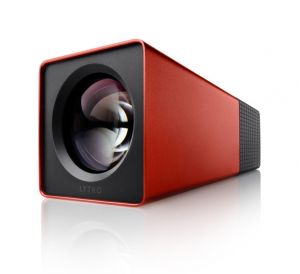 Been tons of chatter online about the Lytro camera the last few weeks. In case you’ve been living under a rock or too busy to notice, then you’ll be happy to know that the new Lytro camera allows you to select focus AFTER you shoot the photograph. AMAZING technology developed at Stanford by Ren Ng. Just like you can change the white balance after capture when shooting RAW, well now you can put those striking blue eyes of your model in focus later.
Been tons of chatter online about the Lytro camera the last few weeks. In case you’ve been living under a rock or too busy to notice, then you’ll be happy to know that the new Lytro camera allows you to select focus AFTER you shoot the photograph. AMAZING technology developed at Stanford by Ren Ng. Just like you can change the white balance after capture when shooting RAW, well now you can put those striking blue eyes of your model in focus later.
Consider that with the technology of a camera like the RED Epic – shooting a 5,000 pixel wide image at 96 frames per second. You can aim that sucker at a scene and shoot 1000 14 megapixel still images in 10 seconds. No more need to catch ‘the decisive moment’!
Combine these two technologies? Whew! Now you’ve really got something.
Unless… your pictures have no focus. If you think that you’re photos are going to be better in the future because you don’t have to pick the moment or focus on your subject, you’re entirely wrong. These technologies are truly amazing, revolutionary and will continue to change the face of photography as we know it.
But mark my words, if you’re goal is to get your work to stand out from the crowd (as good art does), then you’ll need to focus all the more.
Focus on subject.
Focus on content.
Focus on meaning.
Focus on artistic vision…
…because these are all the tools that computers can’t help you with and these are the only ways from here on out that you’re going to be able to make a mark.
Focus on that.
[and don’t hate it, celebrate it, cause it’s all you’ve got.]






















For art, I wouldn’t know. Surely it would have to be special to stand out.
My challenge, for which the Lytro is PERFECT for me, is that I miss the damn moment all the time (of, for example, my kids in an action shot), always due to focus and/or timing (due to focusing). Sure, I have a $500 camera now – not a $3000+. But lugging something big/expensive (which might help) around will add another amount of time to set up for ‘the moment.’
This thing (Lytro) is shutter-fast, focus-FIXABLE (to which I can render said 2d-perfect shot from), and small enough to have ready at any time.
My issue is not art. It is time to capture. For me, this is an easy answer.
Should really try it before you write about why you think something won’t work.
@ chase – Ironic, I just got a tattoo of a focus symbol on my inner wrist so I don’t forget.
@steven – Not everyone shares the same intent with image taking. Where you want to “see”, others want to define a moment or remember something funny. The shift in technology is the ability to easily share images. You probably have 3K family photos stuffed in a box somewhere. Now you can share everything with everyone, so why not do it? Technology has allowed me to be aware of other people’s work and get better myself. I have a nice DSLR which I learn more about it daily. Most of my images come from my iphone which I can use to share with people, or to put it another way, I happily use it to flood the ‘net with mediocrity. There’s room for everyone’s point of view out there.
I couldn’t agree more. It’s fascinating tech, and there’s certainly an artistic use for it, but not necessarily useful for all art. I went into some depth on this in a post about focus in motion pictures:
http://www.candlerblog.com/2011/10/23/lytro-camera-could-change-the-purpose-of-focus-but-why/
Well said Chase.
Lytro looks like a fun camera (and beautifully designed & marketed), but that’s about it.
I don’t understand the tech involved, but much of the language & descriptions of how this works on their web pages doesn’t add up for me.
Looks to me like a detailed hyperfocal type image capture, with ‘focus’ applied by softening the ‘unfocussed’ areas.
But I could be wrong 😉
Anyways, a nicely designed fun camera.